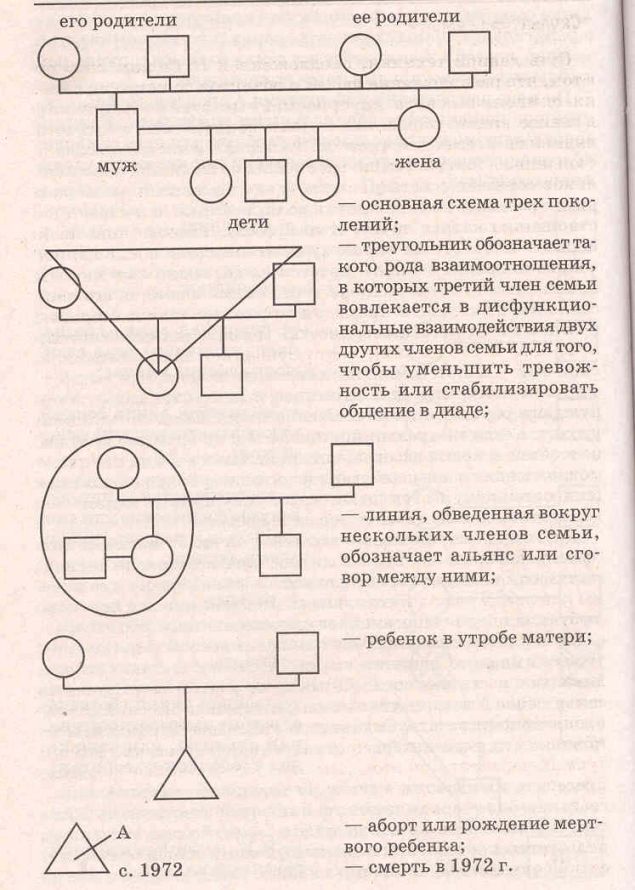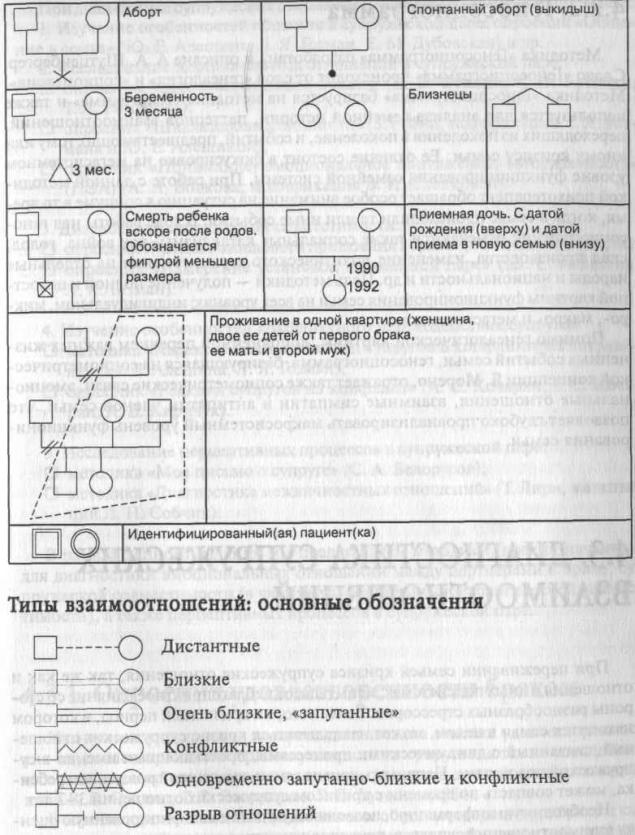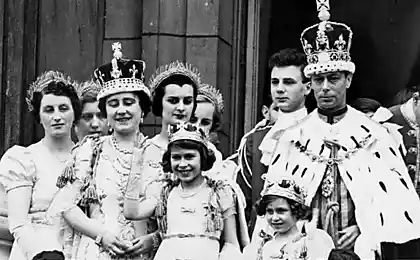755
Genogram: the laws by which lives and develops in your FAMILY
Each of us, whether he likes it or not, is a descendant of its Kind, a member of the family of their ancestors, a member of their own family system. Belonging to the family system is one of the most important and significant human resources that enhance the success and effectiveness of his life. A feeling of love and support from their ancestors, a sense of belonging to its own Kind, a sense of power kind of gives a person a huge resource of life, called "love of kind". People for some reason cut off from its kind, is like a tree without roots. He often feels lonely, can be quite successful, confident and effective.

According to the approach of Bert Hellinger, each person is part of a certain family and tribal system. Being part of the system, a person included in a family system-the family interaction has a significant influence on his life and destiny. This interaction can be structurally described by categories and orders of General systems theory. Within each family tribal system there are certain laws by which it lives and develops.
One of the family therapists of the first generation M. Bowen in 1978 he developed a method of constructing a genogram with the help of which people can display people that make up the historical past and present of his family.
The goal is to help people to perceive their current and future system meglonoth relationship as something that they can continue to consciously and deliberately build, integrating family of origin they created with their family.
The method of “Genogram” is used for the analysis of family history, stages of development of family patterns of relationships, passing from generation to generation, and the events preceding the crisis of the family and the treatment of psychological help.
Genogram is a form of family genealogy, which records information about family members in at least three generations. In clinical practice genogram was first introduced by Murray, Bowe-rated in 1978 (Sherman R., Fridman N., 1997).
In order to make genogram, it is necessary to conduct a survey of all family members. Then you can use the special symbols of the genogram to create a chart that will document the story of your family.

Genogram shows how this family of people related to each other, and can contain information such as: names, surnames, dates of birth, marriages, divorces and death (if at an early age, cause of death), education, occupation, profession, serious illness, country of residence, religion.
GENOGRAM is a graphic representation of all members of the human family, which describes what is happening of important events. Analysis of the genogram allows you to identify recurring in the system event date (the“anniversary syndrome”), to recognize a hereditary family illness and negative emotional patterns (patterns) patterns and relations, personal characteristics and family beliefs handed down from generation to generation.
The technique allows, through the construction of the diagram, reflecting the history of the extended family for three or more generations, to showhow patterns of behaviour and family relationship are passed on from generation to generation; as events such as deaths, illness, major professional success, moving to a new place of residence, etc. influence modern behavior patterns and relationships in family dyads and triangles. Genogram allows the specialist and the family to obtain a holistic picture considering all phenomena and events of family life in an integrated, vertically oriented term.

Children are indicated in order of seniority from left to right.
Full genogram should include from 3 to 7 generations.
Who among family members should be included in genogram?
1. Any serious (physical) illness in the family?
2. What emotional illness? (alcoholism, mental illness, addiction).
3. What was fatal and what was cause of death?
4. What divorce or separation of spouses, adultery or secret?
5. How best you would describe personal qualities of each family member?
6. How family members Express love and affection? As you learn about it?
7. As family members argue? How they Express anger? How do you know they are angry?
8. Who was the extrovert and who was an introvert?
9. Who was the main supplier and who was the main dependent?
10. What alliances, coalitions and subsystems in the family? What are their rules and restrictions?
11. What are the family myths? What are their secrets?
12. How family members communicate with each other? (words, gestures, expressions, body language).
13. What are the primary values? What are family values?
14. As the family is manifested in masculinity and femininity?
15. What are the family “possible” and “impossible”, “must” and “should not”?
16. What happens to feelings in the family: they recognize, report them or avoid their manifestation?
17. How are decisions made in your family? Who made it? Who is involved?
18. How family members behave in society in comparison with their behavior at home?
The symbols used in the preparation of the genogram


Genogram can be used for showing the diversity of family relationships, and types of diseases.
Genogram includes symbols that indicate a family relationship, such as conflict, closeness, estrangement, etc. Emotional relationships have specific symbols that helps to maintain the semantic flow of the genogram.
Thus, the purpose of the creation and use of the genogram is to help people to think in the perspective of his personal historical past and to understand that their relationship with family of origin require completion. People to be able to find a way out of dead ends and make relationships within their families more satisfying to be able to get rid of these family relationships, which have remained unchanged, hurt.
Seven measurements genogram (for hands. M. V. Smolensk)
Genogram has seven parts, each of which will be useful in their own way. Please fill in every part.
1. Family tree:
We must begin to diagram your family tree. For every man used a square, but for every female. Need to portray their own situation, then spouse(s) and children. This is the “core family” and the center or “trunk” of the family tree.
Now you can extend the schema to include the various branches of the family tree that it will be displayed on the parents, their children, grandparents and their children. If you just can't remember all the details, you just need to draw circles and squares for as many family members, how many can be counted.
You then need to number the circles and squares and write in every name and age. Thus, it will be possible to refer to each person by number or name. At the end to make the date of marriage (B) divorce (R).
2. Medical information:
Tracing family histories of diseases and ill health can be very useful, if you know what to look for. Diseases such as diabetes, alcoholism, cardiac disorders, pancreas and liver are sometimes transmitted genetically.
Arthritis, multiple sclerosis, stress reactions and emotional disorders such as obsessions, depression, hostility, and excessive guilt or sensitivity are likely to be more important than a broken leg (of course, if in the family there is a predominance of broken legs!). The point is not to lose sight of the duplicate of the disease, condition or illness on your tree.
3. Emotional patterns:
Let's see how it feels to be every man to himself, to others and to life. Some can be open, receptive, cheerful, lucky, or optimistic. Others may suffer from depression, different phobias, violent temper, disgust, jealousy, or negativity. Usually a person can determine these patterns (models), asking questions such: “What five words can is better to describe the grandfather?” Then compare how you see the grandfather with the way others see him.
One of the members of the family can say: “90% of the time grandfather was angry,” another joins the conversation and adds: “Yes, and the remaining 10% miserable!” Children can understand how my grandfather developed his negative emotional habits, knowing that he was always angry. It could also help the present generation to overcome these inherited patterns.
4. The dynamics of the relationship:
Now we need to see how family members relate to each other. For example, you can ask: “What were mom and dad?” “How grandma coped with the grandfather's anger is?” Are family relationships or closed, or condemning research, manipulative or seeking compromise. Discover how your family coped with crisis of relations in whose hands there was a superiority who solved more and who less.
You can then determine the category of any relationship between family members or relations between family groups with a quality that characterizes them (remote, hostile, close), and special treatment to highlight the capital letters (A, B, C), so that you could describe them more fully on a separate page.
5. System family:
It would be useful to look at how different parts of the family system work together, or how they fail. Are there any coalitions (special groups who stick together and not give back access to others) or special roles prescribed to certain members or parts of the family? Are there any disruptions (divorce, separation, family feud), the family geeks or “problematic” people? Can you understand how your family system works and is transmitted from generation to generation? May want to use colored pencils to highlight a special part of the family schemes to be described in detail in accordance with the color.
6. Family beliefs:
Family members provide us with their beliefs, touching all spheres of life of the family: how to raise children, how to deal with adolescents, when and who to marry, how many children to have, how to make a living, what work best, how to measure success, how to cope with crisis, loss, trauma and tragedy, as aging and how to meet death.
It is therefore necessary to pay particular attention to these beliefs: they are most probably similar to what you believe, consciously or unconsciously, and dictate you how to survive and how to live. If they are immature, broken, or dysfunctional, they can restrict thinking, to block the development and keep us from realizing the potential. The study of such beliefs is the beginning of alignment with your HIGHEST POTENTIAL.
7. Society and your family:
At the final stage you need to take a step back and see what the family sees itself as part of society. As the whole family presents itself to society? What other systems identify themselves? And as usual society is in the family?
RECOMMENDATIONS:
Once you have made genogram, carefully watch what the similarities and the sequence can be identified. Perhaps there are samples of inherited behavior or particular psychological tendencies that are very noticeable when everything is grouped together in this way.
P. S. And remember, only by changing their consumption — together we change the world! ©
Source: bondhsi.ru/genogramma-izuchenie-semejnoj-istorii/

According to the approach of Bert Hellinger, each person is part of a certain family and tribal system. Being part of the system, a person included in a family system-the family interaction has a significant influence on his life and destiny. This interaction can be structurally described by categories and orders of General systems theory. Within each family tribal system there are certain laws by which it lives and develops.
One of the family therapists of the first generation M. Bowen in 1978 he developed a method of constructing a genogram with the help of which people can display people that make up the historical past and present of his family.
The goal is to help people to perceive their current and future system meglonoth relationship as something that they can continue to consciously and deliberately build, integrating family of origin they created with their family.
The method of “Genogram” is used for the analysis of family history, stages of development of family patterns of relationships, passing from generation to generation, and the events preceding the crisis of the family and the treatment of psychological help.
Genogram is a form of family genealogy, which records information about family members in at least three generations. In clinical practice genogram was first introduced by Murray, Bowe-rated in 1978 (Sherman R., Fridman N., 1997).
In order to make genogram, it is necessary to conduct a survey of all family members. Then you can use the special symbols of the genogram to create a chart that will document the story of your family.

Genogram shows how this family of people related to each other, and can contain information such as: names, surnames, dates of birth, marriages, divorces and death (if at an early age, cause of death), education, occupation, profession, serious illness, country of residence, religion.
GENOGRAM is a graphic representation of all members of the human family, which describes what is happening of important events. Analysis of the genogram allows you to identify recurring in the system event date (the“anniversary syndrome”), to recognize a hereditary family illness and negative emotional patterns (patterns) patterns and relations, personal characteristics and family beliefs handed down from generation to generation.
The technique allows, through the construction of the diagram, reflecting the history of the extended family for three or more generations, to showhow patterns of behaviour and family relationship are passed on from generation to generation; as events such as deaths, illness, major professional success, moving to a new place of residence, etc. influence modern behavior patterns and relationships in family dyads and triangles. Genogram allows the specialist and the family to obtain a holistic picture considering all phenomena and events of family life in an integrated, vertically oriented term.

Children are indicated in order of seniority from left to right.
Full genogram should include from 3 to 7 generations.
Who among family members should be included in genogram?
- relatives and half-brothers and sisters
- mother, father, first partners parents
- native uncles and aunts
- previous and current partners, husbands (wives)
- children (relatives, adoptive, adopted, aborted)
- grandparents (and sometimes their brothers or sisters, if they'd had a particularly hard lot)
- great-grandparents (sometimes up to 5-7 knee), if there was a particularly severe event within the family)
- integrated into the system of a person (babysitter, nurse, people, had a great influence on family life, for example, to leave a legacy)
- Be careful, because these discussions may be difficult for some family members.
- Be prepared to hear a lot of stories. Stories are the best way to memorize and store information, encourage it, listen carefully, ask open questions, which motivate a person to disclose more information.
- You may also be able to find the information through your network searches or family books. However, you need to be sure that this information is accurate. If you decide to use these methods, you will have to recheck the information received from different sources and a way to communicate with human beings.
1. Any serious (physical) illness in the family?
2. What emotional illness? (alcoholism, mental illness, addiction).
3. What was fatal and what was cause of death?
4. What divorce or separation of spouses, adultery or secret?
5. How best you would describe personal qualities of each family member?
6. How family members Express love and affection? As you learn about it?
7. As family members argue? How they Express anger? How do you know they are angry?
8. Who was the extrovert and who was an introvert?
9. Who was the main supplier and who was the main dependent?
10. What alliances, coalitions and subsystems in the family? What are their rules and restrictions?
11. What are the family myths? What are their secrets?
12. How family members communicate with each other? (words, gestures, expressions, body language).
13. What are the primary values? What are family values?
14. As the family is manifested in masculinity and femininity?
15. What are the family “possible” and “impossible”, “must” and “should not”?
16. What happens to feelings in the family: they recognize, report them or avoid their manifestation?
17. How are decisions made in your family? Who made it? Who is involved?
18. How family members behave in society in comparison with their behavior at home?
The symbols used in the preparation of the genogram


Genogram can be used for showing the diversity of family relationships, and types of diseases.
Genogram includes symbols that indicate a family relationship, such as conflict, closeness, estrangement, etc. Emotional relationships have specific symbols that helps to maintain the semantic flow of the genogram.
Thus, the purpose of the creation and use of the genogram is to help people to think in the perspective of his personal historical past and to understand that their relationship with family of origin require completion. People to be able to find a way out of dead ends and make relationships within their families more satisfying to be able to get rid of these family relationships, which have remained unchanged, hurt.
Seven measurements genogram (for hands. M. V. Smolensk)
Genogram has seven parts, each of which will be useful in their own way. Please fill in every part.
1. Family tree:
We must begin to diagram your family tree. For every man used a square, but for every female. Need to portray their own situation, then spouse(s) and children. This is the “core family” and the center or “trunk” of the family tree.
Now you can extend the schema to include the various branches of the family tree that it will be displayed on the parents, their children, grandparents and their children. If you just can't remember all the details, you just need to draw circles and squares for as many family members, how many can be counted.
You then need to number the circles and squares and write in every name and age. Thus, it will be possible to refer to each person by number or name. At the end to make the date of marriage (B) divorce (R).
2. Medical information:
Tracing family histories of diseases and ill health can be very useful, if you know what to look for. Diseases such as diabetes, alcoholism, cardiac disorders, pancreas and liver are sometimes transmitted genetically.
Arthritis, multiple sclerosis, stress reactions and emotional disorders such as obsessions, depression, hostility, and excessive guilt or sensitivity are likely to be more important than a broken leg (of course, if in the family there is a predominance of broken legs!). The point is not to lose sight of the duplicate of the disease, condition or illness on your tree.
3. Emotional patterns:
Let's see how it feels to be every man to himself, to others and to life. Some can be open, receptive, cheerful, lucky, or optimistic. Others may suffer from depression, different phobias, violent temper, disgust, jealousy, or negativity. Usually a person can determine these patterns (models), asking questions such: “What five words can is better to describe the grandfather?” Then compare how you see the grandfather with the way others see him.
One of the members of the family can say: “90% of the time grandfather was angry,” another joins the conversation and adds: “Yes, and the remaining 10% miserable!” Children can understand how my grandfather developed his negative emotional habits, knowing that he was always angry. It could also help the present generation to overcome these inherited patterns.
4. The dynamics of the relationship:
Now we need to see how family members relate to each other. For example, you can ask: “What were mom and dad?” “How grandma coped with the grandfather's anger is?” Are family relationships or closed, or condemning research, manipulative or seeking compromise. Discover how your family coped with crisis of relations in whose hands there was a superiority who solved more and who less.
You can then determine the category of any relationship between family members or relations between family groups with a quality that characterizes them (remote, hostile, close), and special treatment to highlight the capital letters (A, B, C), so that you could describe them more fully on a separate page.
5. System family:
It would be useful to look at how different parts of the family system work together, or how they fail. Are there any coalitions (special groups who stick together and not give back access to others) or special roles prescribed to certain members or parts of the family? Are there any disruptions (divorce, separation, family feud), the family geeks or “problematic” people? Can you understand how your family system works and is transmitted from generation to generation? May want to use colored pencils to highlight a special part of the family schemes to be described in detail in accordance with the color.
6. Family beliefs:
Family members provide us with their beliefs, touching all spheres of life of the family: how to raise children, how to deal with adolescents, when and who to marry, how many children to have, how to make a living, what work best, how to measure success, how to cope with crisis, loss, trauma and tragedy, as aging and how to meet death.
It is therefore necessary to pay particular attention to these beliefs: they are most probably similar to what you believe, consciously or unconsciously, and dictate you how to survive and how to live. If they are immature, broken, or dysfunctional, they can restrict thinking, to block the development and keep us from realizing the potential. The study of such beliefs is the beginning of alignment with your HIGHEST POTENTIAL.
7. Society and your family:
At the final stage you need to take a step back and see what the family sees itself as part of society. As the whole family presents itself to society? What other systems identify themselves? And as usual society is in the family?
RECOMMENDATIONS:
Once you have made genogram, carefully watch what the similarities and the sequence can be identified. Perhaps there are samples of inherited behavior or particular psychological tendencies that are very noticeable when everything is grouped together in this way.
- Be careful with your assumptions. One should not draw conclusions about specific hereditary diseases in your family, based only on data from the genogram. Consult your medical professional concerning your suspicions, and let him advise you in matters of this hereditary disease.
- Do not use genogram as assumptions about any actions and promptings of members of a family, and do not try to resist them. If you detect trends that uncle Fyodor leaves with each of their work, and cousin Mary always takes people's Boyfriends, not in a hurry to wave in front of them compiled by genograms as evidence that they need the help of a psychoanalyst. Try to avoid superficial attitudes of family members after creating this genogram, first ask them to do about it conclusion your family or personal lawyer.
- If you describe in detail the family history, the facts and similarities discovered through genograms, can explainwhy members of the family changed the geographic area, what types of relationships can be traced, and perhaps even find family members who were not officially recognized.
- Keep your genogram in a safe place. The facts and events included in the chart can be unpleasant or undesirable to some members of the family.
- This can be an excellent school project, students will choose a famous person and research the history of her family and family relationships. This can be facilitated using the Internet, but the search may return inaccurate facts and narrow the information so it can be considered as a personal study, but not necessarily exhaustive.
- Always maintain the confidentiality of family memberswhen you share your genogram with other people outside the family.
- Never use genogram to confront a family member without the assistance of a lawyer or professional of health.
P. S. And remember, only by changing their consumption — together we change the world! ©
Source: bondhsi.ru/genogramma-izuchenie-semejnoj-istorii/























